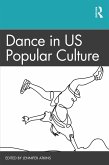This book explores how television and streaming services portray transgender characters who identify as male or nonbinary in television media.
Transmasculinity on Television takes a closer look at transmasculine and nonbinary characters on broadcast, cable, and streaming services between 2000 and 2021. Significant changes have occurred since the release of the 1999 film Boys Don't Cry, and in particular through the increase in transgender producers, writers, and actors playing those roles. While a great deal of research has been published on gay, lesbian, and female transgender characters, very little analysis has been done on trans male representation in American media. This book examines the history of how film and television have portrayed transgender characters, how these depictions have developed over time and what impact these representations may have on audience attitudes.
This accessible and engaging study is suitable for students and scholars in Gender Studies, Media Studies and LGBTQ Studies.
Transmasculinity on Television takes a closer look at transmasculine and nonbinary characters on broadcast, cable, and streaming services between 2000 and 2021. Significant changes have occurred since the release of the 1999 film Boys Don't Cry, and in particular through the increase in transgender producers, writers, and actors playing those roles. While a great deal of research has been published on gay, lesbian, and female transgender characters, very little analysis has been done on trans male representation in American media. This book examines the history of how film and television have portrayed transgender characters, how these depictions have developed over time and what impact these representations may have on audience attitudes.
This accessible and engaging study is suitable for students and scholars in Gender Studies, Media Studies and LGBTQ Studies.








